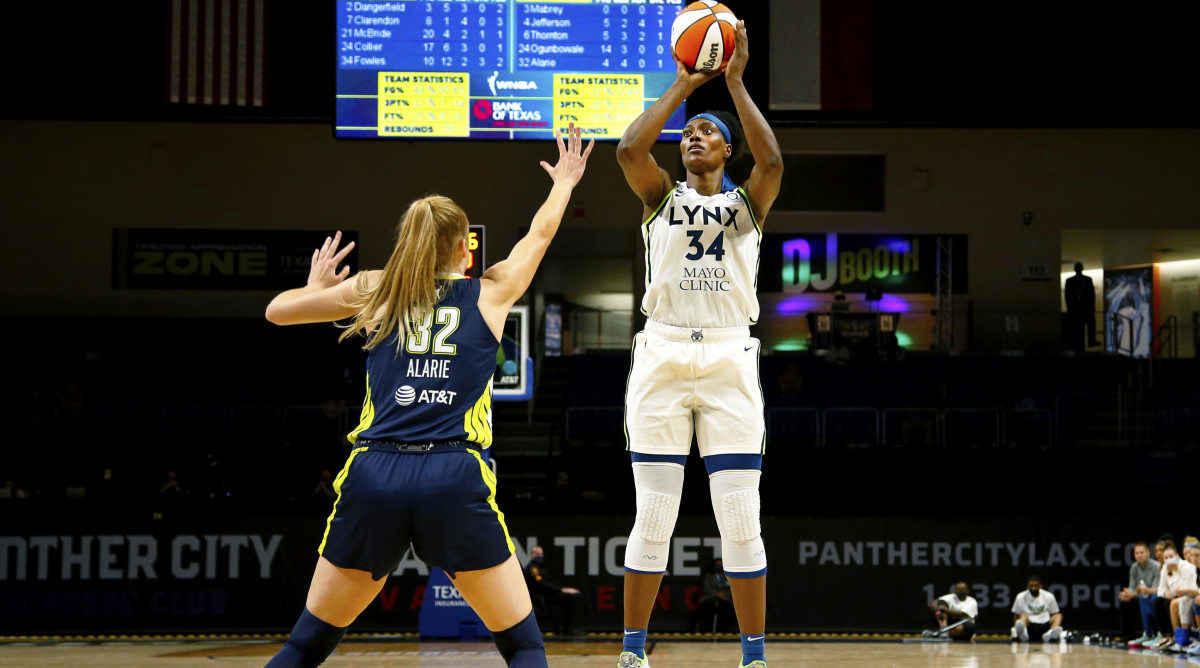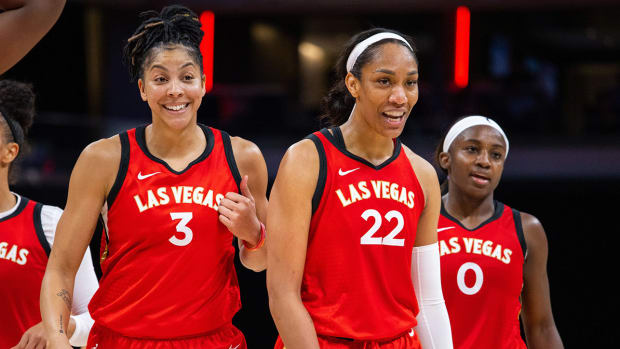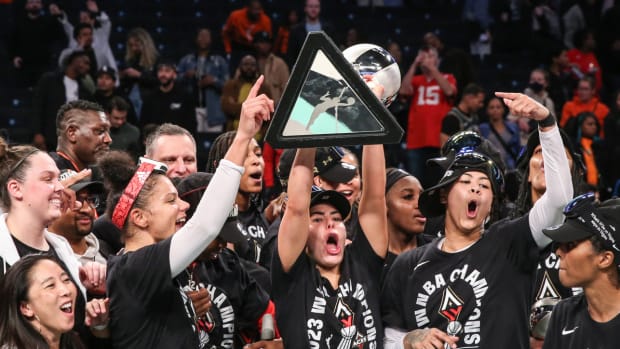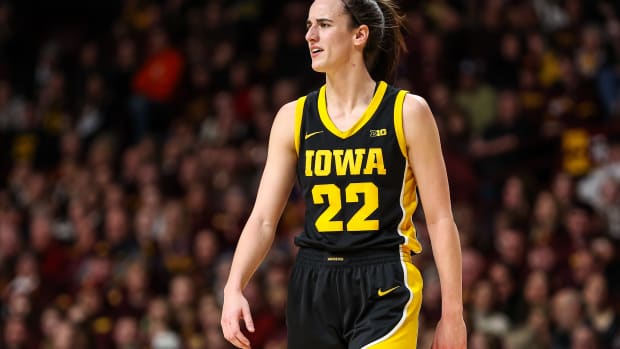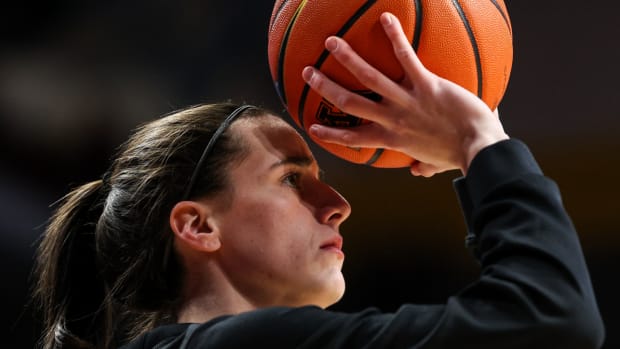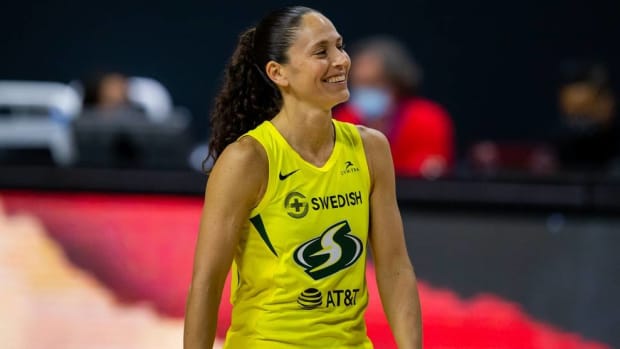How Sylvia Fowles Has Remained the Lynx' Stabilizing Force
Each Thursday this season, Sports Illustrated’s Ben Pickman is diving deep into the WNBA story lines you need to know.
Before last season, Sylvia Fowles had never missed a game as part of the Lynx. But even the WNBA’s all-time leading rebounder fell victim to serious injury during the league’s most unusual year yet. On Aug. 14, Fowles was diagnosed with a calf strain, which kept her out of 15 of Minnesota’s 22 regular-season contests. Fowles remained in the Wubble and did return for the team’s lone playoff game, but for once she experienced what life on the sideline was like.
“That was the first time an injury actually broke me down mentally,” she says. “That was hard, not to be out there playing, not to be going through the struggles with your team. But it also taught me that they learned to play without me, which was great to see.”
With her calf injury now behind her, Fowles is trying to reciprocate the appreciation she had for her teammates last season. Few organizations this year have dealt with more injuries than the Lynx, who are now 6–7 after a win over the Dream on Wednesday night. Rennia Davis, a 2021 first-round pick, suffered a stress fracture in her right foot at the start of training camp, ending her debut campaign before it ever began. Major free-agent acquisitions Natalie Achonwa (right MCL sprain) and Aerial Powers (torn ligament in right thumb) were also recently ruled out indefinitely. A groin injury has knocked out reserve forward Jessica Shepard indefinitely.
But in their absence, Fowles has remained Minnesota’s stabilizing force, ever-cognizant of wanting to minimize any anxieties her sidelined teammates feel.
“You always have that in the back of your head, of how can I play for this person so they can be at ease during rehab and when trying to come back, and not trying to come back too fast,” Fowles says.
She is more than just a locker room leader, though. Despite being in her 14th season, the seven-time All-Star is continuing to find ways to improve—and dominate.
“A lot of it is myself,” Fowles says of her motivation to keep developing. “Just trying to prove little things to myself. That I can still do things at somewhat of a high rate.”
For years, Fowles, 35, has made a habit of spending large chunks of her offseason on sand. Whether doing beach or sandpit workouts, the uneven surfaces have helped the future Hall of Famer improve her balance, strength and body control. But this offseason, as a result of last summer’s calf strain, Fowles had to rethink her training; she turned to pool work and band exercises, and went back to her childhood roots of running on a field.
She also tried to refine elements of her game. Heading into this season, Fowles and Lynx coach Cheryl Reeve exchanged their thoughts on what realistic goals the 6' 6" center could achieve. Among the list: first was keeping Fowles healthy, but they also sought to see an improvement in Fowles’s steals, blocks and deflections totals as well as her communication level on defense. “Pretty much a ‘just trying to fit in where I get in’ type of mindset,” Fowles says.
That attitude can be seen through the numerous ways she has impacted games this season. Against the Sun on May 30, Fowles put on one of her vintage offensive performances, scoring 24 points on 64.3% shooting from the field, while also dishing out four assists and hauling in nine rebounds. In a win over the Sparks on June 12, she took just six shots, but was efficient around the basket, finishing with 15 points. Just as important, Fowles ended the 16-point Minnesota victory with five steals and four blocks.
Wednesday night, she put together what has been arguably her best game of the year, tying her season-high in points (26) and recording a season-high in rebounds (19) and blocks (5) as the Lynx overcame an 18-point first half deficit.
“Syl’s just somebody that whatever we need, she says that she’ll do,” Reeve said before Minnesota’s May 30th win over Connecticut.
If she needs to control the glass, she will—as evidenced by her league-leading 9.6 rebounds per game. If she needs to be a pest in the passing game she will—Fowles also leads the W in steals with 2.2 per game.
She says she no longer tries just to “beat the ball down a team’s throat” unless she has to. But don’t get it twisted: If she wants to impose her will on the offensive end she still can, as Fowles is shooting 76.6% within three feet of the basket and a league-leading 64% from the field. She remains among the league’s most impactful defenders and is currently third in defensive win shares, according to Basketball-Reference.
“Syl embodies everything you’d want her to be,” Reeve said Wednesday night. “So I mean, her legacy is, who’s better? Who’s the better center in the history of our league? That’s her legacy. She’s the best center in the history of our league.”
While the Lynx started the season 0–4, the franchise that currently owns the league’s longest active playoff appearance streak (10 years) has won six of their last nine games and put itself squarely in the postseason picture. In addition to Fowles’s steady production, key to that turnaround has been the all-around impact of forward Napheesa Collier, who missed Minnesota’s first three games.
Collier has quickly become one of the league’s budding stars, bringing a versatility on both ends that helps the Lynx flourish. Ask Fowles what the biggest thing Collier has taught her and you can see how the 24-year-old forward who will be making her Team USA debut this summer has rubbed off on the soon-to-be four-time Olympian.
“That everything is not going to go your way, but that the game is not just about scoring,” Fowles says of Collier’s advice. “That some nights it’s just not your night, so how can you find other ways to make yourself effective and give your team a push.”
The Lynx are still looking to be steadier on a game-to-game basis. If they are, there’s no reason to expect their postseason streak will end. All told, though, it’s a dilemma that’s easier to resolve when you have one of the league’s most unshakeable presences in your locker room, and one of the league’s most productive players on the floor.
“I mean, the beauty of our team is that anybody can step up on any given night,” Fowles says. “But the one thing that needs to be consistent is our leadership. And I’m trying to be consistent in doing things that always help the team out.”
Notes from around the WNBA:
Friday morning, Fowles was in her hotel room in Dallas getting ready to attend practice when her phone rang. Carol Callan, the U.S. women’s national team director, was on the other line, eager to inform Fowles that she had made the U.S. Olympic team for the fourth time. “You never want to take it for granted, so every opportunity that you get you feel grateful,” Fowles says. “To be saying that I’m still here trying to compete for my fourth gold medal is unbelievable.”
The Lynx star was told to keep the news confidential, but she called her mother, Arrittio, so the two of them could share the excitement. Fowles also issued a clear directive: Don’t share the announcement with any of her four siblings.
“She’s pretty good at that. She didn’t tell anyone,” Fowles says. “She’s been on this rodeo before. She knew the protocol.”
Fowles highlights a U.S. Olympic team that is full of veteran experience. The team’s average age is 29.9, and players on the 12-person roster will travel to Tokyo already having taken home 15 Olympic gold medals and 19 World Cup gold medals in their careers.
Still, as I detailed on Monday, the roster was also constructed with an eye toward the future. Hall of Fame South Carolina coach Dawn Staley, who will make her Olympic head coaching debut this summer, said earlier this week that the group is “jump-starting” what the next generation of the USA Basketball program will look like. Fowles believed it was the first time she could recall an Olympic team having an even distribution of veterans and first-timers. “I think it’s a good combination for those newbies to get their feet wet and experience what this is all about, and let them understand the legacy that USA Basketball carries,” Fowles says.
The American team enters the tournament as the favorite. As it goes for a seventh-straight gold, keep in mind that USA Basketball appears to be looking to keep that streak alive for as many cycles as it possibly can.
In other Olympic team news, the U.S. three-on-three team was announced on Wednesday with Aces guard Kelsey Plum, Sky center Stefanie Dolson, Storm wing Katie Lou Samuelson and Wings guard Allisha Gray as the team’s four participants.
Like in five-on-five competition, the U.S. team enters this event as the favorite, having recently gone undefeated in May’s Olympic three-on-three qualifying event. “I would describe it as a 400- or 800-[meter sprint],” Plum says. “It’s just pretty much go, go, go, as hard as you can. I think for me that’s a good thing because I think I’m a high-energy player. So I’ve really enjoyed that piece of it.”
On Monday, the Dream announced that their leading scorer, guard Tiffany Hayes, would be out approximately four to six weeks with a Grade 2 MCL tear in her right knee. The injury is certainly a setback for Hayes, who is averaging a career-high 17.6 points per game this season, as well as for the Dream, who at 5–8 are looking to get back to the postseason after failing to reach it in each of the past two seasons.
Atlanta entered this year with one of the league’s deepest backcourts and has relied on three-guard lineups throughout the season. For that reason, Hayes’s injury could alter much of how the Dream look. Hayes, guard Courtney Williams and guard Odyssey Sims have played 157 minutes together this year, the second-most of any three-person group Atlanta has used. While the trio has a -3.8 net rating, the group gives the Dream a number of playmaking options and has been instrumental in their success.
What makes matters worse is that Atlanta has also spent much of the year playing without second-year guard Chennedy Carter. Carter, who has flashed a dynamic scoring ability throughout her young professional career, had been dealing with an elbow injury she sustained May 27. She returned Wednesday night against the Lynx, and it’s worth watching to see how she meshes with Williams and Sims going forward.
Two possible other adjustments to watch are to see whether interim coach Mike Petersen will play 2021 No. 3 pick Aari McDonald alongside Williams and Sims an increasing amount, swapping the Arizona star in for Hayes. Before Atlanta’s game Wednesday night against Minnesota, that trio (McDonald, Williams and Sims) had played in just six games, and 27 minutes, together and had recorded just an 82.8 offensive rating and 114.1 defensive rating. McDonald was both an aggressive defender and high-quality playmaker in college, but she is averaging just 13.8 minutes and 6.7 points per game this season.
It also wouldn’t be surprising to see Peterson lean more on his three-guard lineup of Sims, Williams and Crystal Bradford. The 27-year-old Bradford entered Wednesday having played in 12 games, and 63 minutes, alongside the aforementioned guards. While it also has recorded a negative net rating while on the floor, the team’s offense and defense has been better with that three-guard combination than with McDonald in the fold.
Last week, I wrote about how it was tough to imagine a team other than the Storm, Aces or Sun making the WNBA Finals. However, there was one team I acknowledged could still potentially throw off that assessment: the Sky. If anything, the play of the 8–7 Sky in the past week has only affirmed what many thought of the franchise heading into the year: that this particular group could have realistic title aspirations. Since Candace Parker’s return from injury on June 9, Chicago has gone on a six-game winning streak. Over that span, they lead the league in offensive rating, scoring just over 110 points per 100 possessions and are No. 2 in assist-turnover ratio, behind the Storm. “When we’re taking care of it, we’re gonna score half the time,” WNBA assist leader Courtney Vandersloot recently told reporters.
It’s not just Parker’s return, though, that has keyed the team’s recent run. Guard Allie Quigley returned to play June 3 after missing six games with a hamstring injury and has helped solidify the team’s bench. Quigley had been a starter for each of the past four seasons, but the 35-year-old is emerging as coach James Wade’s most-trusted reserve and provides an offensive jolt off the bench. Quigley has scored in double digits in each of the past six games, with Wade’s saying that she gives the team “a person to play to” when she’s on the floor. “Whoever she’s on the floor with, she helps them by adding space,” he recently said of her new role.
The Sky’s second-half schedule is difficult, with six games against the Aces and Storm still on the docket, but if they maintain their current level of play, they might just jump into the league’s top tier.
More WNBA:












